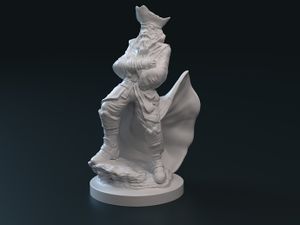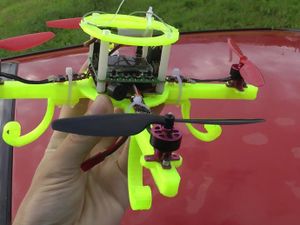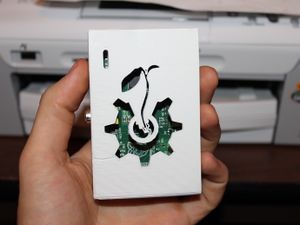User:Bxl5138
Contents
Introduction
My name is Brandon Leshchinskiy. I'm a sophomore at The Pennsylvania State University, majoring in Electrical Engineering and minoring in economics, entrepreneurship, or something similar. Ultimately, I hope to work at a technical company in a nontechnical position.
Blogs
Blog posts will be written weekly. These will be based on prompts given by the professor, and generally will concern RepRapping.
Blog Number One
Part A
An item that is useful
I don’t think a key ring yet exists that would prevent me from losing my keys, but this comes pretty close. It’s unique, goofy, and looks awesome.Part B
An item that is useless
While these shoe bowties are absolutely useless, they are doubtlessly my favorite item I’ve found on Thingiverse thus far. Seriously, what’s classier than a plastic bow tie on each foot?Part C
An item that is amazing
I think this print is appropriate for the amazing section for a multitude of reasons. First and foremost, the detail is stunning – especially given the relatively young age of 3D printing. Secondly, pirates are objectively badass. That’s enough for me, really.Part D
An item that is funny
I suppose the object itself isn’t inherently funny, but when you consider all the possibilities of a 3D printed quadrocopter, it certainly becomes enlivening. I’m picturing a fleet of them flying into an introductory chem lecture, narrowly missing the professor, and then zooming out of the room. That’s not a terrible idea, right?Part E
A great Raspberry Pi case
This case is not only sleek and aesthetically pleasing, but the holes enhance functionality by preventing overheating. Still, it seems simple enough to print that it wouldn't cause any impossible issues.Blog Number Two
The Economic Impact of 3D Printing
One of the most interesting aspects of 3D printing, in my opinion, is the effects it will have on the global economy. Since the industrial revolution, our process for making new products has been more or less the same: build a prototype by hand or in a machine shop, adjust and improve it, and then use a factory to manufacture it on a large scale. 3D printing will revolutionize the prototyping stage of this process. Rather than working manually to create the prototype, companies will simply be able to print their CAD designs and test them.
Because this is clearly a more efficient method of prototyping, it is predicted to spread quickly through the industrial world. Indeed, according to this video, the 3D printing industry will become a $3B business by 2016. This is pretty mind-blowing, given the relatively young age of additive manufacturing.
Part of this, of course, will be simply by virtue of the careers offered by 3D printing companies, in addition to the actual hardware they produce. Another economic benefit, however, will be the creative outlet 3D printing will become for millions of people. That is, anyone with an idea for a new product and access to a 3D printer can simply design and create their idea. The expenses associated with product creation will be practically nullified, allowing average men and women to engage in invention. Overall, the proliferation of 3D printers will offer huge financial and creative benefits to millions, if not billions, of people.
Blog Number Three
Blog commentary While many of the blog posts have been insightful and interesting, one of my favorites is Steven Rekstad's post about deep space travel and 3D printing, which can be found here: http://reprap.org/wiki/User:StevenRekstad. He does a great job illustrating a very practical application of 3D printing, and while the post is specifically about deep space travel, the notion that 3D printers can replace spare parts in general -- because you can just print any part you need -- is, quite frankly, awesome. His post is clearly well thought-out and well-written, but one improvement to be made with the blog as a whole is to add a table of contents. This would make it easier to view and link to specific sections or posts, not to mention improving the overall professionalism. Still, the content itself is very well done.
Blog Number Four=
Arduino and RepRap Arduino and RepRap are, in my opinion, among the coolest inventions of the last few decades. The Internet allowed people to share information with each other for free, and these projects now allow people to take it a step further; between the Internet, RepRapping, an Arduinos, people can make basically whatever tool they want by using someone else's design, and then programming it to do whatever they need. In terms of the business model, giving away the main product for free is certainly non-standard. Many businesses give away various side products -- complements to their main offer -- but these open source businesses have basically turned this idea on its head. It's evidently effective enough, as they are clearly profitable. Take Google as a case in point: their main service, organizing and retrieving information, is completely free. However, by allowing advertisers access to the types of searches people are doing, Google has become a billion dollar company.




